Curtis Edlin, Kanda University of International Studies, Chiba, Japan
Yuri Imamura, Kanda University of International Studies, Chiba, Japan
Edlin, C., & Imamura, Y. (2018). Resource coordination in the Self-Access Learning Center at Kanda University of International Studies for the 2017-2018 academic year: Activity, concept, and expanding definitions. Relay Journal, 1(1), 178-196. https://doi.org/10.37237/relay/010119
Download paginated PDF version
*This page reflects the original version of this document. Please see PDF for most recent and updated version.
Abstract
In the 2017-2018 academic year, the Self-Access Learning Center, Kanda University of International Studies moved into a new purpose-built building. This new building has afforded many opportunities to rethink the place of resources in the center, as well as what constitutes resources and how we can facilitate their use. The move has also presented numerous challenges to which advising team and other support staff have had to react rapidly. This report reflects on the tasks and approaches of the two resource coordinators and resource teams for the 2017-2018 academic year. It additionally provides further commentary on our expanding definitions of resources, as well as how they are being approached by resource teams and others, both within the limits of resource coordination and without, and in addition to future directions.
Keywords: Self-access, resources, materials, space and place
Organization
This paper is written by the Self-Access Learning Center (SALC) resource coordinators at Kanda University of International Studies (KUIS) primarily to report changes in scope and activities carried out in managing our resources moving into and through this academic year (AY 2017-2018). To expand and help readers further understand our situation, we have also included information related to our work with resources that is not coordinated or tangentially coordinated by us, though many of these other aspects have also spun off into resource projects. We hope that this report might prove helpful to others working in the field who want to get a sense of the direction the field is heading and offer some more concrete examples of how one center is handling this movement (in addition to its own contextual considerations). This report will be divided into three primary sections: 1) Materials; 2) Spaces; and 3) People. These sections are created for convenience and clarity, but in reality, there are many overlaps between the three, which is likely apparent reading through the sections. Projects have been organized according to which is the three is most likely a driving consideration or concern. Further, not all work in the entirety of these sections falls under the purview of the resource coordinators at the moment, and is currently either dealt with by a team of advisors and staff at large, or in some cases is under the purview of another position (i.e., people as a resource and the principle lecturer responsible for coordinating the support for and development of communities in the SALC) but it still bears noting as we stretch our conceptual boundaries of what constitutes a resource.
Background
Self-access centers (SACs) and self-access learning centers (SALCs) started at universities in the late 1960’s, if by other names. SACs and SALCs tend to be language learning oriented, and they were conceived as places to support language learning and development outside of classroom confines. Many SACs are built as constructivist learning environments, and learner autonomy features as one of the traditional primary tenets in the development of these centers. Nowadays, SACs are no longer limited to universities, but are also located in high schools and occasionally in community centers around the world. Some countries have taken up the call for these kinds of places more strongly than others, such as Mexico, the UK, France, Thailand, New Zealand, and Hong Kong (Mynard, forthcoming). In Japan’s case, there are over 800 universities, and only currently 38 language learning spaces included in the Japan Association for Self-Access Learning (JASAL) registry. Still, self-access is a growing field and appears to be garnering attention and support as time goes on.
Context
Kanda University of International Studies is an international university located in Makuhari, Chiba City, Japan. It has around 4000 undergraduate students, all of whom have iPads (relevant to discussions of materials), and it has one of Japan’s preeminent SACs, called the SALC (originally for Self-Access Learning Centre, and now with the changed spelling of Self-Access Language Center). It is well-staffed, and this year, there were five assistant managers (AMs), two production designers (PDs), 10 full-time learning advisors (LAs), and the director, who is also a learning advisor. Two of the LAs also share a resource coordinator position. The SALC is additionally helped by student staff, known as SALCers, who assist in carrying out day-to-day tasks. The SALC started in 2002 in two small classrooms with a wall knocked out between them in an older building, Building 4. In response to its popularity among students, the school had a full floor set aside for the SALC when they opened Building 6. The 2017-2018 academic year at Kanda University of International Studies saw the move of advisors and resources from the SALC in Building 6 to the the new, purpose-built Building 8. This presented many challenges for the SALC team, especially in terms of managing resources leading to and during the move.
Materials
Preparation in the prior year
As the move into the new building would prove to be a daunting task, we wanted to prune out materials to make the move more manageable. This process was initiated and overseen by prior resource coordinator over the year leading up to the move. The assistant managers also provided the advisors with lists of materials that had not been checked out more than a handful of times in the prior few years. Some materials also did not stand the test of time in terms of content. The idea was to check if these materials were still useful or if they could be safely discarded. However, there was also the possibility that many materials could be used within the SALC without being checked out. Advisors were each in charge of two sections, and they review these less-used materials to make the final judgment as to whether to keep or discard materials. At one point in the past, the we had over 10,000 physical materials. Prior to the move, we aimed to prune approximately 30% of the collection. It should be noted, though, that we also ordered more than 1000 materials prior to the move as we had numerous materials stained, sun-bleached, or otherwise damaged by age.
The move
The move to the new building did not happen until quite a bit later than originally anticipated. Though it was in time for the beginning of the academic year, teachers and advisors had little time to get situated. While English courses in the school have majorly transitioned to digital materials that students interact with on their iPads, the SALC still has many physical materials. This meant we had to find space and try to organize the materials in a short period of time. The materials were brought over in boxes during the spring vacation, and we can back before the semester began to start unloading and organizing these materials in the new center.
Materials organization
In the time moving up to the 2017-2018, we tried to scout of possible areas to store and display materials. While the old SALC was built around the materials, the new SALC is built to be a social space, with materials around the periphery instead of in the center. The final physical space turned out to be slightly different than we were expecting, so while we had planned to place materials according to a map we were giving prior to the move, some locations had to be changed. Not having much time to organize our materials in the new space prior to the start of the semester in this initial move, we had to make quick judgment calls as to where materials would be placed. One of the current resource project teams is focusing on facilitating students’ selection and use of academic materials. Moving into the new academic year, they are going to try and re-categorize materials to new designations (for example, from ‘reading’ to ‘academic reading’) to make it easier to discern which materials are academic-focused or leisure-focused (skills-based reading materials vs. reading for pleasure in this case).
Ordering
Learning advisors had been in charge of two sections each, along with a an assistant manager. Prior to the move, this had been for curation and pruning of materials. After the move it was used primarily for purposes of populating materials recommendation pathways. It is possible for LAs to order materials from outside their sections, but they need to include information for ordering the material as well as a rationale for its acquisition. Before placing orders, the recommended material is checked by several parties for relevance (the resource coordinators, at least one AM, and usually at least one other LA). The vast majority of material requests are approved, as the requests to be thoughtful and predicated on student need. Students can also make materials recommendations at the SALC’s front counter, which then go through the AMs and, depending on the material, sometimes also through the LA in charge of the material’s section. The AM in charge of materials ordering then looks at the resource the student wants to have included in the SALC and compared it against criteria for resources in the SALC. A response to requests is posted with either an approval or denial and rationale for the final decision.
Displays
In the prior SALC building, due to spatial limitations, it was sometimes difficult to find enough display space for some of our materials. We also had a large number of very high and very low shelves which made materials harder to look at (relative to user height). Most of these very low and very high shelves have been eliminated in the new SALC, and we have shelves whose tops are easily viewable to most users and can used to display materials. Past internal research shows that SALC users place a high importance on the physical condition of materials, and often take materials’ aesthetic into account when selecting resources. Simply displaying a material facing front, when that breaks the pattern of how these materials are stored, creates a natural sort of recommendation and provides visual information that may draw users in to look further.
One of the things we can do now that we have a larger space is increase the number and variety of displays. In the prior building, Building 6, we had a single, clear front entrance to the SALC, whereas the new Building 8 SALC has two large entrances, with neither one being a clear front. We now have display areas near each of these two entrances. One is used primarily for recommended materials, often along a monthly or seasonal theme, while the other is used to showcase new materials.
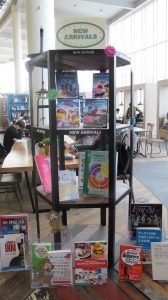
Figure 1. New Materials Display
Recommendations
Coming into the new building, we knew that recommendations would be important. This is supported by prior research in internal, unpublished studies that show students highly appreciate recommendations, especially when they feel unsure of how to otherwise discern whether some particular material might be a good resource for them. Our old recommendation systems consisted of small cards given to each advisor, which allowed us to write a short recommendation using a marking pen. One of the drawbacks, some advisors noted, was that the recommendation would be erased and lost in order to then reuse the cards to recommend new materials. In addition, writing with a marking pen meant that the recommendations were too short or difficult for users to read. The learning advisors sought out several ways in which to make recommendations more relevant, more numerous, and more permanent, through the following projects:
Materials pathways: One difficulty students have traditionally had with resources is not knowing good ways to use them. Expanding on a project that was begun by a prior resource coordinator, LAs highlighted either specific materials or types of materials in each section and gave sample activities that students could engage in with these materials.
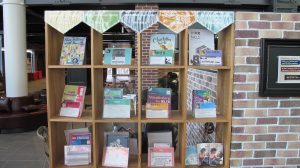
Figure 2. Materials Recommendations with Usage Pathways
Recommendation folders and blurbs: In order to include more information that students could use, one of the resource coordinators arranged clear folders with advisors’ names and faces on them in which we could easily include printed recommendations. As the old cards used whiteboard pens that did not erase easily, the new cards have been easier to replace or update, and they allow us to include more information about the material or how to use it. These new recommendation folders did not replace the old recommendation cards, but are used in addition to them.
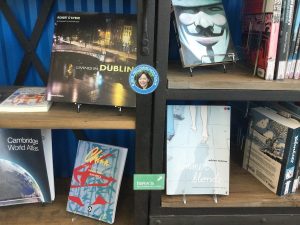
Figure 3. Two Types of Recommendation Tags
Recommendation tags: The SALC seems to become busy by peaks and troughs throughout the year, and at some points it can be difficult for LAs to find the time to update recommendations with lengthy text, or it can otherwise be difficult to find a spot for a larger recommendation card. One of the resource coordinators also made small tags with magnets on the back which can be affixed to the metal railing on shelves next to, under, or over materials on display. There are two varieties of these smaller recommendation tags–one type with advisor names, and one type with advisor faces.
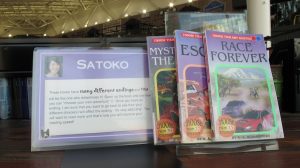
Figure 4. An Advisor’s Clear Folder Recommendation for Materials on Display
Crowd-sourced recommendation system [for graded readers]: A common concern of students in selecting graded readers is not knowing what books they will like (Goldberg & Ramonda, 2014). This year, one of the resource coordinators worked alongside an English teacher with programming experience to develop a crowd-sourced recommendation system as an app for iPad. There were various obstacles that were encountered due to an old cataloguing system in the SALC which covered up the ISBN tags and required development time. The basic infrastructure is now in place and is has been piloted for graded readers students in one of the teacher’s classes, and the app is going through a final debug process before being made available to all students in the coming school year. In lieu of the ISBN tags, the app uses image recognition to discern which book some particular resource is according to its cover. Once a book is recognized, students can leave reviews and feedback or read them. There are several rating criteria used to assess various aspects of the quality of a material, and the system was constructed to make it quick and easy for students to leave feedback about materials. The reviews can be left by students, advisors, teachers, or anyone else in the university wishing to contribute to the database of feedback for these graded readers. By using the app, students can see quickly how particular books were received by other students. The underlying architecture is in place, which can allow for future expansion with other materials, but the app will probably remain limited to graded readers at least for the start of the 2018-2019 academic year.
Recommendations in display areas: In addition to recommendations with materials in the shelving areas, recommendations have been expanded to some materials in display areas. Display areas will be detailed in the next section.
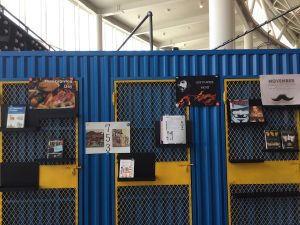
Figure 5. Recommendations with a Monthly Theme | Photo taken by the SALC team
Resource sharing in professional development: At regular intervals we held sharing sessions amongst advisors for digital resources and TOEIC materials. These sessions could be expanded in the future. They were useful in raising awareness among the advisors of good materials we can recommend to students, as well as being helpful in generating information on usage pathways for these materials so that we can make recommendations on not only what to use, but how to use it.
Space
Space as a resource
The shift in some SACs in recent years has been from materials repository (akin to a language-focused library) to social learning space. As digital resources become more widely used and ubiquitous, this role of SACs as social spaces will become further highlighted and more important. This supports the ideas of language and learning as social activities, and it accounts for social constructivism, providing an area for students to work alongside both domain experts and near-peers outside of their time in class. This will in fact be one of our SALC’s main focuses moving forward, and this year we have a separate SALC communities coordinator position held by another LA.
Concepts of environmental design, and space and place for development
Heading into the new SALC, part of how we conceptualized the space was informed by Edlin’s (2016) principles of design for self-access language learning environments. The principles attend to creating a space that is physiologically and psychologically conducive to learning. It should be noted, however, that while these principles were a focus of the advising team at the time of the design process, they went somewhat ignored by the design firm that was hired. Thus, they have been approached by the advising team from a developmental perspective since moving into the new building. Expanding on those principles, much of the direction of the current SALC and its development as a learning environment is derived from Murray’s (2014) commentary on space and place, and also his outlook on SACs as self-enriching complex dynamic ecosocial systems (2017). The idea is that space refers to a physical space, and place is what a space becomes through the activities of the people in it and their beliefs about it.
Maps
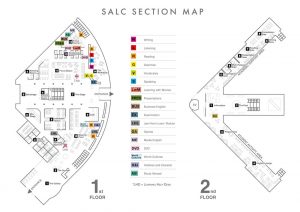
Figure 6. SALC Sections Map | map designed by the SALC team
As our move into the new SALC happened just before the start of the term, the current map reflects early iterations of organization in the new environment. As sections and spaces have been revised and changed, so to do we need to rework the map to match the current reality of the SALC, which is happening as we move into the coming academic year. Our maps offer a guide by which students can find spaces and materials both.
Signage
Signage was important to have, but did not exist when we first moved into the new building. Temporary signage was created for a number of sections immediately after the move, with some of the signs illustrated in marker on whiteboards. These signs were later moved to create more space for materials and to have more front-facing displays for recommended materials.
Later, revised signage was created which listed out the full name of a section, and had the color and abbreviation letter corresponding to the section as it is listed on our SALC map. The following photo is an example, which has the ‘Ex’ for examinations and ‘G’ for grammar, along with their colors as correspond to examination and grammar materials’ locations in the SALC as listed on our map:
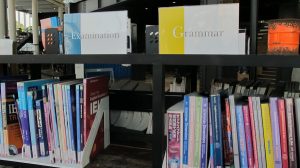
Figure 7. Example Materials Section Signage
Reorganization of materials
After the first semester, we had an opportunity and some time to revisit the organization of sections and materials in the SALC. During this time we rearranged several sections based on student usage patterns, and according to natural patterns for grouping among materials. For example, vocabulary and grammar sections shifted over to a large shelf which housed most of our examination materials, as outside of classrooms, this may be a common driver for students to use these resources. The rest of our four skills materials stayed on a separate, as they tend to be less examination-centric in their approaches.
Furniture moves
The effects of the layout and qualities of furniture on learning, both in regard to self-study and via social interaction, cannot be understated. Thus far, furniture has been moved to accommodate students in particular space, in terms of seating comfort (seats and chairs), privacy, and social interaction. A prime example is the seating arrangements in the English Lounge area on the second floor. It is a carry-over from the old SALC’s ‘yellow sofas’ area, in which students would relax comfortably and use English. After learning that students had a difficult time approaching others there, in part because it was intimidating when skilled speakers (either teachers or students) were all clustered and already in conversation, we tried rearranging the furniture (see Chen & Mynard, 2018 (this issue) for more details). This was important for us in particular due to the language policy on the second floor, which is an English only policy (whereas the first floor is a multilingual space), and within which we want learners to feel comfortable and be able to approach and meet others. An area near the end was also created specifically for those who want to approach others whom they do not know for conversation, staffed by SALCers and an LA, called the Chat Spot. For more information on this move and the Chat Spot, you can also read Imamura (2018, this issue).
Language policy
The old SALC was all English-Only, but the policy of the new SALC is to have a multilingual first floor and an English-only second floor. This helps satisfy a diversity of learner skill and anxiety levels. It is also helpful to support advising in Japanese when needed. For more discussion on the language policy, see Imamura’s “Adopting and Adapting to New Language Policies in a Self-Access Centre in Japan” (2018, this issue).
Orientations
Every year, the LAs conduct orientations for classes of freshman students, but this, being located in a new building, all students are new students to the building. All faculty and staff are new to the building too, for that matter. That has meant we have a large need and demand for orientations, and perhaps larger than we could easily handle amongst LAs in the first semester. To try and help streamline the process, LAs have worked on creating iBook orientation materials. This was a project that actually began in our last year in the old SALC, and it was updated and expanded to cover more information in the new SALC. These iBooks can ostensibly be used without an LA, but it is usually the case that LAs visit classes, introduce the iBooks, visit the SALC, and act as a support as students work through the activities. Continuing development of these introductory resources to our center is happening in response to research and feedback on the materials and experiences, and this is being spearheaded by our usability and promotion resources research and development team.
People
Many businesses and other institutional endeavors have often regarded people as resources in terms of ‘human resources’. In our SALC these certainly exist, and we try to further develop these assets through professional development for our advisors and teachers. Recently, in contrast with the strict human resources model of thinking, we have begun conceptualizing people as resources in terms of increased opportunities for learning and interaction formed by groups of learners and communities. This as boon for learning is supported by a number of theories around constructivism, including sociocultural learning theory (see Vygotsky, 1962; 1978), and Wenger’s communities of practice (1998). This year has seen a renewed focus on community in the SALC, but much of this is within the purview of another LA who is working in a principle learning advisor position as communities coordinator.
Future Directions through Resource Research and Development Groups
In addition to the actions and activities detailed above, there are a number of ongoing research projects and developmental projects being approached by either individual LAs or in groups, and sometimes in conjunction with teachers or other university faculty. In addition to the actual work on their projects, LAs were clustered according to research interests so that they could generate ideas, develop research to find out more about a topic of interest, try interventions, and get feedback from others. These clusters are broadly related to the following areas: Digital and online materials, SALC usability and promotion, and examinations, and academic resources.
Digital and online resources team
Library digital collections. One project carried out this year involved raising student awareness of access to a digital collection of reading materials through our university library. While information was assumed by LAs to be useful, an information session was not well attended by students. There seemed to be more interest in learning about the information among teachers who could use the collections for their classes. While the exact reason for low student participation in these information sessions cannot be determined, we speculate that it is perhaps the case that using the system on their own presents too many barriers to access to be an appealing resource for students. Future iterations of information sessions may target teachers who could use these resources for class collections.
Copyright in Japan. Another project is focused on finding out more about copyright and how it applies to our materials. We have been unable to reproduce covers of materials for visual recommendations for some time due to fear of copyright infringement. Further examination of copyright law, and in particular in educational contexts, has led us to find we can have pictures of materials if they are of a small size or comprise a small portion of the picture, or that are able to use cover photos when used in a book list, center information, or book reviews (though notably, not online in this manner under current copyright law in Japan). The reading is heavy, and there is still more to read and understand. Further understanding will help craft more effective policy toward material recommendations and promotion in the coming year, especially on social media accessed by the students.
Graded reader image recognition app for crowdsourced feedback and recommendations. This app was mentioned above, but has been a considerable amount of work over the course of this academic year. The pilot and subsequent debugging are being finished now, so the app can likely be made available for deployment to all students in the coming academic year.
iBeacons. This year our center acquired iBeacons. These beacons are used to get better information on how many unique users are coming to the SALC and where they are spending their time. However, the beacons are capable of much more, and it is possible that they could be used in the future not just to gather data, but to push data to students to help them navigate toward sections or to make recommendations by resource type. This is an ongoing area of interest and we are hoping to learn how we can develop our use of the beacons further in the coming academic year.
Usability and promotion resources team
Movie recommendation cards. New recommendation cards for movies have been introduced recently. These offer a pathway for peer recommendations of movies and give a space to describe the movie or why it is being recommended. Such recommendation systems may be expanded in the coming year.
Center orientation materials. Revision of orientation iBooks and other digital materials is being spearheaded in part by one of the LAs in this group. We are hoping to craft this as an anytime reference that students can refer back to throughout the year when needed.
Examinations Resources Team
Examination support sheets. A self-diagnostic sheet for the TOEIC test and a TOEFL ITP instruction sheet were created because the majority of students are studying those tests for various reasons (academic, professional, and/or personal). These could be expanded upon in the future.
IELTS speaking practice support resources. Moving into the next year, one goal is to revise and further develop speaking practice materials for students interested in taking IELTS. IELTS is somewhat popular among students who will use their score for study abroad, and it is a test of choice for those students looking for a test score that will reflect their speaking skills. These materials may be used to practice with advisors, teachers, peers, or others.
Materials categorization. Further classification of textbooks in the examinations section to categorize them and differentiate between practice tests and skill development texts it one goal in the coming year.
Academic Resources Team
Reorganization of academic, skills-based materials. As previously detailed in organization of materials, this resource group is interested in organizing materials so that students can more easily find the types of material they are looking for. For example, academic, skills-based reading materials would be distinguished and separated from leisure reading materials.
Conclusion
The SALC’s move into a new building this year presented both many opportunities and challenges. While it necessitated a lot of work, the two resource coordinators were able, with the help of a SALC team that also includes AMs, PDs, and SALCers, to tackle a number of projects to improve usability of materials and spaces as resources. There are a number of continuing projects moving forward, and the coming years will certainly see increased focus on space, people as resources, and the overlap of the two in terms of place being a space that is socially constructed, and which affords opportunities for action and interaction that can lead to learning.
Notes on the Contributors
Curtis Edlin is a learning advisor at Kanda University of International Studies, and he is co-resource coordinator in the Self-Access Learning Center. He holds an MA TESOL from SIT Graduate Institute in Vermont, USA, and his research interests include learning environment design and grounded pedagogy.
Yuri Imamura is a learning advisor at Kanda University of International Studies, and she is also co-resource coordinator in the Self-Access Learning Center. She holds an MA TEFL from the University of Birmingham, UK. Her research interests are L2 motivation and self-access management.
References
Edlin, C. (2016). Informed eclecticism in the design of self-access language learning environments. Studies in Self-Access Learning Journal, 7(2), 115-135.
Chen, A., & Mynard, J. (2018). Student perceptions of the English lounge after a layout change. Relay Journal, 1(1).
Goldberg, P., & Ramonda, K. (2014). A case for no choice: The benefits of having class readers. Presentation at JALT 7th Annual Extensive Reading Seminar, Keisen University, Tokyo, September 28.
Imamura, Y. (2018). Adopting and adapting new to new language policies in a self-access centre in Japan. Relay Journal, 1(1).
Murray, G. (2014). Social dimensions of autonomy in language learning. New York, NY: Palgrave Macmillan.
Murray, G. (2017). Self-access environments as self-enriching complex dynamic ecosocial systems. Plenary presentation at JASAL 2017 Annual Conference, Kanda University of International Studies, Chiba, Japan, December 16.
Mynard, J. (forthcoming). Advising in self-access learning: Promoting language learner autonomy beyond the classroom. In H. Reinders, S. Ryan, & S. Nakao (Eds.) Innovations in language learning and teaching: The case of Japan. Palgrave Macmillan.
Vygotsky, L. S. (1962). Thought and language. Cambridge, MA: M.I.T. Press, Massachusetts Institute of Technology.
Vygotsky, L. S. (1978). Mind in society: The development of higher psychological processes. Cambridge, MA: Harvard University Press.
Wenger, E. (1998). Communities of Practice: Learning, Meaning, and Identity. Cambridge, UK: Cambridge University Press.

The reflections revealing in this papers are good tips for anybody who wants to set up the self-access centre because they cover all the main components of the self-access centre especially how to acquire the materials and arrange them so that they would be accessible to the users. When the centre was moved from one building to the other and expand its role, more decisions are needed to keep the role of the self-access centre and how to expand the new roles.
A self-access centre is regarded as a place to provide resource based learning; thus managing the resources to make them accessible for learning is important. In this paper, the process of decisions such as how many materials should be kept in the new SALC, how they should be organized, how to differentiate between the materials used for language advising and those used for general English improvement, and how to deal with digital materials and copyright are presented. This information provides good tips for the readers especially the information about digital materials which are commonly used by the students nowadays.
Some of the headings may be misleading such as ‘organization’ was used to refer to the organization of the paper, not the organization of the SALC. And some of the information may not be necessary although it is interesting such as the explanation about not having the signage when the SALC was first moved to the new building is not necessary because it does not affect the use of SALC or the information about staff development. That information does not fit the title of the paper and outshine the key message. A little improvement on this matter would make the focus of the paper clearer.
Thank you very much for your repsonse. It is very helpful in re-crafting and further developing and improving the report. As per your feedback, the paper has been revised for further clarity. As such, the section heading “organization” was eliminated to avoid confusion, and some sections were rearranged to help maintain better focus. The section on information sharing should now properly reflect that it is a means to support positive interventions to get students to helpful materials more than to simply develop staff. Finally, while we decided to keep the section on signage, it is now framed in terms of information design, user experience, and reducing barriers to access in ways that in fact do influence students’ ability to find and use materials. I believe the revised version of the paper will be made available here shortly.